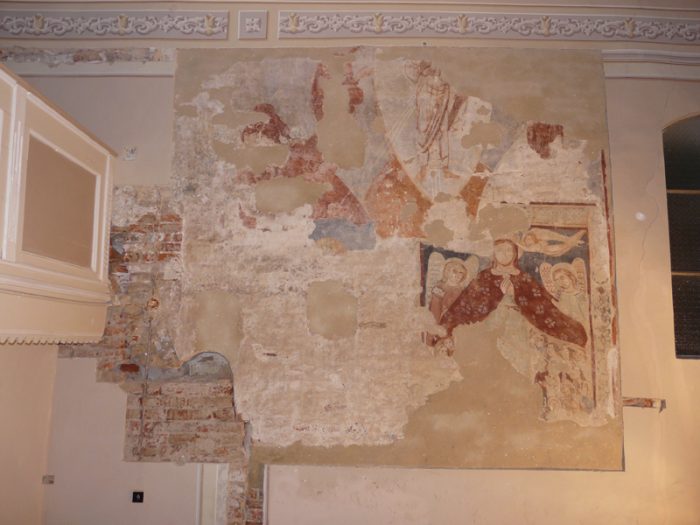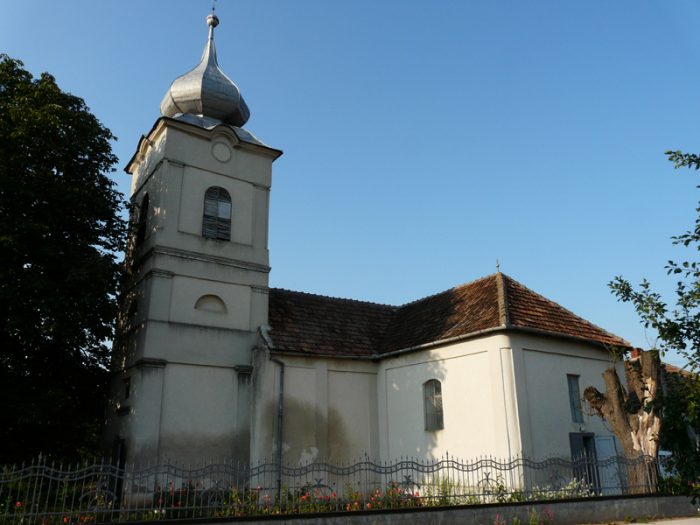
Through his style and composition, a mural, located in the Reformed Church from Berea village (Ciumești commune), gives rise to discussions among specialists.According to them, the author of the medieval painting was a good connoisseur of the Byzantine theme, but, from a stylistic point of view, the scene “Change of Face ” on the wall of the Reformed Church in Berea do not represent similarities with any of the iconographic examples in the wider area of the Carpathian Basin.
The iconographers say that the medieval painting of Berea does not resemble that of the chapel in Gurk (Austria) or the mural representation belonging to the most important Italian-Byzantine cycle of the early 14th century, the fresco of Santamaria Orlea.
Unfortunately, at Berea, only the upper half of the stage was preserved. Moreover, the faces of the prophets and Christ are missing.
As is well known, the scene of the “Change of Face” comes from Byzantine iconographic culture and is quite rare in Western church art. The scene depicts the moment when, before the crucifixion, Jesus took Peter, James, and John, and led them up a high mountain. According to church traditions, it is about Mount Tabor.
If in the oriental church “Change to the Face” was among the 12 main religious holidays since the 6th century, in the Latin church it was only formalized in 1456.However, the traditional forms of the stage are identical in the two church arts until the beginning of the 14th century.Representations of the scene are much rarer in Western medieval painting.
The mural on the north wall of the ship was discovered in 1993, and the preservation of the two fragments of fresco was made only a decade later.The restaurateurs also discovered an earlier layer of the painting, which dates back to the 15th century and represents the “Protective Mother”.The artist painted the Virgin with his hands clasped together, and under the cloak on his shoulders, supported by two angels, are represented several human characters praying on their knees.
The most recent research, carried out in 2010, however, revealed fragments of the church’s original fresco, dated to the Romanesque period (the Romanesque style is the characteristic art of the Western European space from the 11th to the 13th centuries).Located at the top of the Gothic painting, the early fresco layer contains the representation of Jesus Christ in the mandorla, with the Virgin on his right, and probably on the left on St. John the Evangelist.
The first phase of the present church was built at the end of the 12th century and beginning of the 13th century, but in the 17th century, the church underwent a series of modifications, which resulted in a modern appearance.

